New Veins and Voyager's New Frontiers
In this NewsFlash, we wave goodbye to Voyager as it leaves the solar system, and say hello to the first replacement vein engineered from a patient's own stem cells. Plus, evidence that the western Amazon basin has always been wild and empty, and how exam boards are pushing improve education.
In this episode
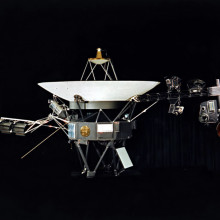
00:22 - Voyager is leaving the system
Voyager is leaving the system
Voyager 1 was the first spacecraft to visit Jupiter and Saturn, it was launched in 1977, visited Jupiter in 1979 and Saturn in 1980, when its main mission was over. But 34 years on it is still doing science. Whilst Voyager 1's instruments may be outdated, and its radioactive power system is starting to run down, it is the furthest man made object from the earth, it is now 17.8 billion km from the sun over 120 times further than the earth is, and at least 3 times further than Pluto. So by being where no other spacecraft has been before it can still do new science.
 At the moment it is passing through the edge of the Heliosphere where the sun's magnetic field is starting to be overwhelmed by the galactic magnetic field. This solar magnetic field deflects very high energy cosmic ray particles created when stars explode forming supernovae, so there should be fewer cosmic ray particles inside the Heliosphere than outside it.
At the moment it is passing through the edge of the Heliosphere where the sun's magnetic field is starting to be overwhelmed by the galactic magnetic field. This solar magnetic field deflects very high energy cosmic ray particles created when stars explode forming supernovae, so there should be fewer cosmic ray particles inside the Heliosphere than outside it.
In the three years up to January Voyager 1 saw a 25% increase in the galactic cosmic rays, which indicates that it is getting close to the boundary, but during may the cosmic rays increased by 9% in a month and 5% in a week, which in a 30 year mission is a very rapid change. It has also been seeing a drop in particles coming from the sun, though the final piece of data they need to be sure that it has left the sun, is if the direction of the magnetic field changes, but they need more data and time to analyse it to be sure.
The Voyager spacecraft are thought to have enough fuel and electrical power to last until 2025, so we may soon be finding what deep space is like.
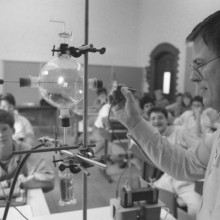
02:50 - Improving Education
Improving Education
Colin Black, OCR
Chris - It's exam time and across the country tens of thousands of young people are sitting public exams that will determine their future, including whether they go on to University.
But, Michael Gove, the Secretary of State for Education, wrote recently to the examinations regulator saying:
"I am increasingly concerned that current A levels - though they have much to commend them - fall short of commanding the level of confidence we would want to see. Leading university academics tell me that A levels do not prepare students well enough for the demands of an undergraduate degree, and I am troubled by reports from learned bodies such as the Institute of Physics..."
As a result, the government want the exam boards, who develop A level exams, to fundamentally change the way they operate.
Joining us to explain what this might mean is Colin Black from the Cambridge-based exam board OCR, who set about 25% of the papers sat by learners in England. Colin, welcome to the Naked Scientists.
Colin - Thanks, Chris.
Chris - First of all, what does the government actually want you to do differently?
Colin - The major change the government is looking for is for us to work - when we're developing the A-levels - actually with people who work at universities. So rather than developing them with our experts and third party experts that we would talk with, and also the various professional organisations, they've asked us to open the door, and actually start speaking to people in higher education.
Chris - What do you think has provoked Michael Gove to say and I'll quote again, "A-levels fall short of commanding the level of confidence we want to see," and university academics are telling us that A-levels do not prepare students well enough for the demands of their undergraduate degrees.
Colin - Well, I don't think that statement has really come as a surprise to us. Ourselves and also our parent organisation, Cambridge assessment, have been undertaking some research over the last 18 months or so. We've been talking to people from HE, we've been talking with professional organisations, and there's a general sense that there's a gap between the A-level student, as they enter higher education, and some of the skills are required. It isn't necessarily about the full content of the subject areas. It may be a bit more about being able to explain things in more depth and things around experimentations, not just of taking the facts as is, and the ability for critical thinking, those sorts of areas. And that's what we've been getting back from higher education. So, it comes as no surprise that Michael Gove has taken all this onboard and come out with the statements that he has recently.
Chris - Is this a problem confined just to science or is this more comprehensive than that because I can see it being more of a problem for science because science is moving a lot more rapidly at the say, history is?
Colin - Yeah, you could see difficulties in a syllabus which lasts 5 years, keeping up with some of the new changes and the various knowledge that comes in to the body of science. But to be honest with you, I think some of this is around the way that the A-levels have been assessed. So therefore, you could apply some of these problems across the whole of the A-level syllabus.
Chris - So, what are boards like yours - OCR - doing about it? How are you responding to this call to action and what are you going to try and do?
Colin - Well, as I previously mentioned, we've already setup some really strong links with higher education; OCR, of course, is part of the University of Cambridge. So what we'll be looking to do is, across all the subject areas, we'll be setting up forums, we'll be setting up discussion groups to see exactly what we want coming out of A-levels. From there, we will setup development panels which we will use, and which will include university lecturers, which we'll use about to start developing not just the content, but also the way that we might look to assess going forwards.
Chris - So, the whole emphasis being on more, giving people the big picture of their subject rather than looking at it in bite-size chunks because I think a major criticism that's often raised to me by students I talk with is that they're taught in bite-size chunks. You learn this module of the subject and you learn it really very well, and you work very hard and you get a good mark in it, but then you forget that move on to the next module and at no time does anyone really expect you to link up all of those different little bits of intensive learning to see this big picture that's so important in science.
Colin - Yeah, I think you're right there actually. The way things are going now are moving away from modularisation which is the bite-size chunk way of learning, and to what's called linearisation at GCSE, I think that'll be exactly the same A-level. And as you say, it's about linking all these things together rather than being an expert over a short period of time, just on one specific area.
Chris - Now, when you and I first met Colin - and we declare an interest here because you approached me a couple of years ago and asked me to come and speak at an inset day that you were running for teachers - now I sat down at the lunch time recess with a lot of teachers and I asked them what they felt the biggest impediments to teaching hard science subjects was. They were saying to me that actually, for the most part, the last time for many of them that they were in a university environment learning like an academic at a university may have been in some cases 20 years ago. And they're trying to turn kids into the right sorts of people who will flourish in that environment, but they felt ill-equipped because it was so long since they've been in it. I think that's probably a reasonable thing isn't it? So the whole idea of trying to bring educators at high level closer to school educators together, I think that's probably really, really fundamental to actually making this get better.
Colin - Yes. One of the things we can specifically do, we can start sort of doing now rather than waiting for this sort of A-level development, is the professional development activities that we've been looking to be able to do for the last couple of years, but we're looking to expand on. And that's actually bringing a lot of new concepts within science and trying to explain that, and going into much more depth with that, and put more events on for teachers because as you say, with the full time teaching that they happen to do, sometimes it's difficult for them to keep up with the sort of current knowledge and all these various changes and lots of them going on.
Chris - And one of those things is something that you've actually asked us to help you with. You're running an event in London, you're trying it with physics first, but I presume you're going to try and expand this to other science subjects, so we're trying with physics first. This is to bring a whole bunch of top tier scientists together in one day and whole load of teachers, and give the teachers the opportunity to hear what is cutting edge in the science world according to those academics and then interact with them. And then that will hopefully mean they take that message back to the classroom and they can - I suppose - make their lessons more relevant to what those academics' expectations will be.
Colin - Absolutely. We've pooled together a number of experts in their fields. We've looked at various subject areas within the A-level, so we've linked all this together to the A-level specification and we pulled in people who are able to talk around cosmology and particle physics, and then we're talking about their specific areas of expertise throughout the day. There'll be opportunities for the A-level teachers, those delivering their qualifications, to interact both with themselves, but also with higher education experts. And as you say, it's about reinvigorating some of the passion some of the teachers had when they first went off to do their first degrees or whatever engaged them with science in the first place, physics in this particular instance, and trying to get that into them, trying to get that spark that they can then deliver back to the students.
Chris - And if people want to come to this, where is it on and when? How do they go about finding out more?
Colin - Okay. It's running on Thursday, the 28th of June so it's in a couple of weeks' time. We're running it at the Royal College of Pathologists in London.
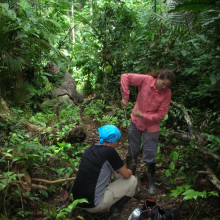
10:32 - Western Amazonia - Wild and Empty
Western Amazonia - Wild and Empty
A study, published in the journal Science this week, has found that Pre-Columbian populations tended to avoid settling in the western Amazon basin, while the eastern and some of the central areas were much more densely populated. Much debate has centred around the effect of European colonisation of the Americas, since it is not known how many people were living in the Amazon basin before conquistadors arrived, it's not known how many settlements were lost due to imported diseases or collapse. As a result, the mission is to try to build a picture of populations in the Amazon rainforest, which is a tricky task, given the impenetrable nature of the landscape.
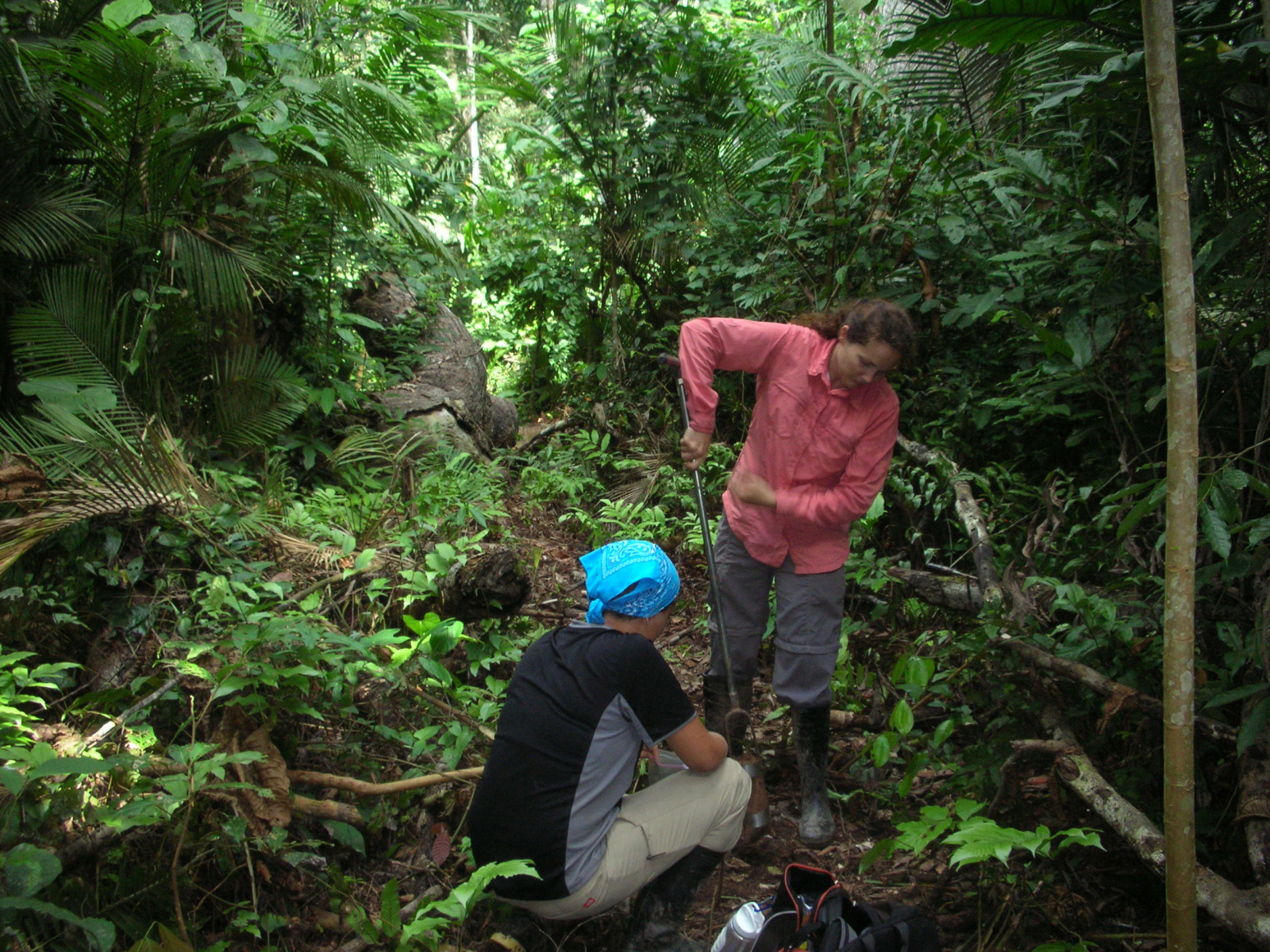
A United States team of researchers, led by Crystal McMichael from the Florida Institute of Technology, solved this problem by collecting soil samples from fifty-five sites across three-million square kilometres of Amazonia. Within the soil, the signs of human occupation that they looked for were: charcoal, which can signify the presence of burning, and phytoliths (tiny silica skeletons left behind by plants - and their shape will tell you what sort of plant it belonged to). If the plant was domesticated or agriculturally useful and present in unnatural proportions, you can assume humans put it there. The researchers also looked for evidence of pottery and worked stone in and around these samples.
They found that, while river bluffs in the eastern area of the Amazon basin were well-populated, these same bluffs were predominantly unoccupied in the western areas. There was very little evidence of burning, no pottery and no significant phytoliths on either the riverside settings or within the forest itself. While there may well have been roaming populations of humans within western Amazonia in Pre-Columbian times, these groups would have been small and probably quite nomadic.
Why is this important? Well, one of the assumptions that has come about with the recent discovery of Amazonian occupation in the eastern areas is that the Amazon was able to withstand relatively heavy exploitation and recover quite quickly. What this study shows, however, is that much of Amazonia was never that heavily exploited by people in the first place. So we cannot assume it's all that resilient to the effects of exploitation today.
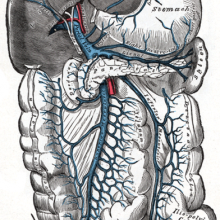
14:58 - Homegrown portal vein replacement
Homegrown portal vein replacement
The first replacement tissue-engineered vein grown from a patient's own stem cells has been successfully transplanted into a 10-year-old Swedish 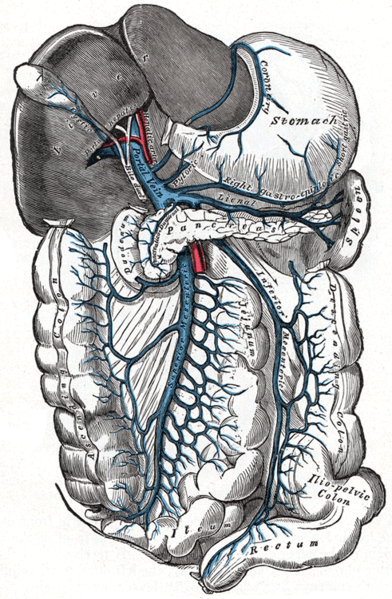 girl.
girl.
Writing in the Lancet, University of Gothenburg researcher Michael Olausson and his colleagues were seeking a treatment for the girl who was suffering from a syndrome caused by an obstruction to her portal vein, the main vessel that carries blood from the intestines to the liver.
When this occurs, the blood finds alternative routes around the obstruction, dangerously dilating other blood vessels that are then prone to rupture and haemorrhage.
One approach is to transplant vascular tissues from other parts of the body including the neck's jugular vein, the saphenous veins in the leg or even the veins around the umbilicus (belly button), to bypass the blockage. But this sort of surgery is truamatic, risky not always possible and also far from ideal in a child.
Instead the team built a new blood vessel segment for their patient. Their approach was to obtain a piece of iliac (top of the leg) vein tissue from a dead 30-year-old donor. This was treated with detergents to remove all of the donor cells, leaving behind just a scaffolding of sterile connective tissue.
Stem cells were harvested from the girl's bone marrow and applied to the decelluarised vein tissue, which they slowly re-populated with muscle over a period of about a month.
Throughout this time the replacement vessel was maintained in a nutrient solution in a specialised culture flask. Endothelial cells (which coat the inner surface of blood vessels and were collected alongside the stem cells) were also added and re-lined the re-built vessel, which was then implanted into the patient, restoring normal blood flow.
Subsequently the graft developed a "kink" and required lengthening with a further section of vein prepared in the same way, but the patient's condition was otherwise dramatically improved and there was no need to resort to other major vein grafting surgeries and their associated risks.
According to the team, "The new stem-cell derived graft resulted not only in good blood flow rates and normal laboratory test values but also in strikingly improved quality of life for the patient."
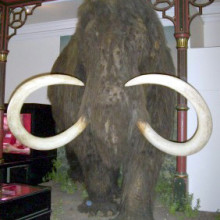
18:56 - Empathy through Music, Cracking Materials and Mammoth Extinctions
Empathy through Music, Cracking Materials and Mammoth Extinctions
Tal-Chen Rabinowitch, University of Cambridge; Troy Shinbrot, Rutgers University; Glen MacDonald, UCLA; Denise Dearing, University of Utah.
Empathy to our Ears
Playing music in groups increases empathy levels in young children, according to work published in the journal Psychology of Music.
Working with 52 children aged 8 to 11 and exposing them to a range of weekly activities including musical games or word activities, Tal-Chen Rabinowitch from the University of Cambridge found that children in the musical groups showed significantly increased levels of empathy when tested for compassion and responses to facial expressions.
It's thought that musical activities enabled the children to experience shared intentions with their peers...
Tal-Chen - Empathy is good for everyone; for children, for adults. Empathy has been seen to be a precursor for pro-social behaviour. So when we empathise, when we understand an other's emotional state, we tend to want to help them. We are looking to and we want to look at also children in the autistic spectrum for example, in which empathy might be able to help them in their social interactions. Right now, I think we're concentrating on the regular population.
A Cracking way to predict Material Failure
Electrical signals could be used to monitor cracks in industrial materials and predict their impending failure or breakage, according to work published in the journal PNAS.
Troy Shinbrot from Rutgers University in the US used powders such as flour and pharmaceutical drugs to model the composition and movement of materials such as ceramics and concrete, which are made by compressing powders together, and found that spikes in voltage occurred as crack-like defects occurred.
Troy - Ceramics are used in everything from catalytic converters to artificial teeth. It may be the case that these kinds of products could also exhibit precursors. So, one might be able to measure voltages and detect whether or not a failure is imminent in these kinds of systems.
A Not-So Mammoth Extinction
The woolly mammoth had a slow decline to extinction due to a range of factors including changes in climate, habitat and living alongside humans.
Using radiocarbon dating on samples of tusks, bones and tissue from the mammoths, Glen MacDonald from the University of California at Los Angeles found that whilst the animals were abundant 30-45,000 years ago, they migrated and changed distribution due to warming climates, human civilisations and the growth of forests in the region of Beringia, which is now Alaska and Eastern Siberia, with their final extinction about 4000 years ago.
Glen - Despite the fact that they were abundant, despite the fact that they had a widespread geography, despite the fact that they could take advantage of a wide range of climates from the northern coastal regions, into the central parts of Siberia, they still at the end of the day went extinct about 4000 years ago. Lots of things we count on for species persistence - rapid ability to recover, large population size, geographically widespread, and we've seen with the mammoth, wasn't good enough.
Spitting Seeds
And finally, the Taily weed plant produces toxic compounds in its seeds to aids its spread across the Negev desert in Israel.
Denise Dearing from the University of Utah monitored the interactions of the plant with predators such as the spiny mouse in both wild and captive environments and found when the mice consumed the plants fruit, they spat out rather than ate the seeds inside.
Enzymes within the seeds activate toxic compounds when the seed is chewed, encouraging predators to spit them out and aid the seed's dispersal instead.
Denise - So, there's this long standing battle between plants that don't want to have their tissues eaten, but they will need to have their seeds dispersed, and this is just a new twist in that battle where this seed predator has now been turned into a seed disperser at the whim of the plant toxins. So, it seems on first glance that the mouse has overcome the senses of the plant, but in this game, the plant is actually winning because it's getting the mouse to do its spitting by dispersing its seeds to suitable locations for germination.










Comments
Add a comment